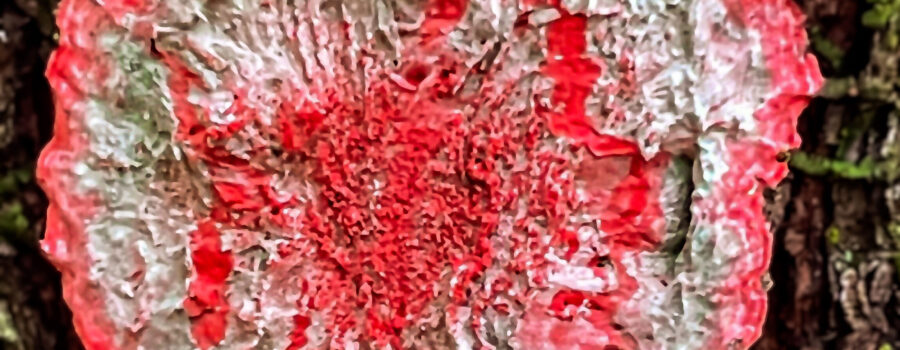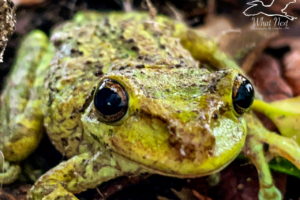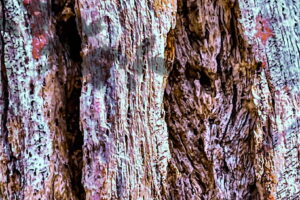Even Lichens Can Be Beautiful

In our relatively moist, humid, and warm climate, lichens are very common. There are lots of them growing on rocks, trees, dead wood, leaves, and even the sides of houses. Most of them around here have either a greenish hue or are light grey, but there is one that really stands out from the rest because of it’s red color. That is the Christmas wreath lichen or Christmas lichen (Cryptothecia rubrocinta). You can see how it got that name with its greenish colored ring sandwiched between a red center and a red outer ring. Some specimens are more greenish than others, and this one was pretty pale compared to many. As most of you probably know, lichens are a symbiotic organism that is made up of a fungus and an algae. The fungus gives the organism its structure, while the algae provides food through photosynthesis. Since the fungus gives the organism it’s structure, they are generally classified as fungi.
The Christmas wreath lichen is native to the southeastern United States, the West Indies, Central America, northern South America, and a few locations in Africa. It usually grows on the bark of trees that grow on the forest edges where they can get at least four hours of sunlight. They seem to have a preference for oak trees, but will also grow on pines, palms, and some other species. They like high humidity areas and trees that grow in sandy, acidic soils. This particular specimen grows on a water oak tree that’s on the edge of my driveway. I’m really not sure when it first appeared, but it has been slowly growing for quite a few years. Fortunately, these lichens don’t damage the tree at all, and in fact, they are known to remove certain toxins from the air.
The red color of the Christmas wreath lichen is provided by a chemical called chiodectonic acid. This chemical provides the organism with protection from UV rays in the sunlight. It also is supposed to taste bad and helps to keep it from being eaten by animals like deer and rabbits as well as domestic herbivores. Most of the time the lichens grow very slowly and produce small round organisms, but on rare occasions many of them can combine and produce large red patches or even turn much of the tree bark red. Those large patches can be especially striking. Now that I’m aware of this pretty little lichen growing on my oak tree, I intend to keep a closer eye on it and see how it continues to grow.






Recent Comments